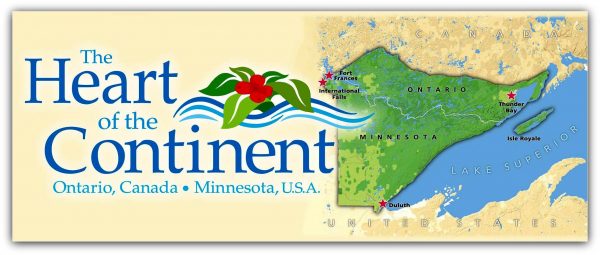Friends of the Boundary Waters Wilderness intern Kate Logan wrote the following report about her experiences paddling along on Leg C of the Canoe the Heart Expedition, from Crane Lake to Ely:
Most canoe trips have a rhythm. We pull out worn clothes from closets and drive to the end of a dirt road. We pack shabby Duluth Packs with remnants of civilization and push a tandem boat off a rocky shore. We switch our paddling side when our arms tire and soon remember the weight of a heavy canoe on sore shoulders.
The Canoe the Heart Expedition alters some of our well practiced rhythms, reminding us of the excitement and challenges that accompanied our first canoe trips.
There are the obvious physical differences between paddling a “normal” canoe and a twenty-seven foot nine-person cedar strip behemoth. Switching sides requires trading places with your partner. Portaging is a six person ordeal instead of a solitary struggle. The canoe moves fast—more than six miles per hour (9.5 km per hour).
Below the surface, the differences are more complex and interesting. You are intimately surrounded by fellow paddlers. No longer isolated in the bow or stern, conversation was easy for folks mid-ship and we tried to take advantage of this unique opportunity to speak openly about the Quetico-Superior ecosystem. It is an exceptional experience to be surrounded by a group of individuals all working on behalf of the same landscape.
The boat’s size was a decided advantage to spreading news about the Quetico-Superior’s centennial celebration. Despite our relative isolation in woods, everyone seemed drawn to our giant boat. We even ran into one fellow that had a pin on his hat from the 75th anniversary of the forest and park. We gave him a 100th anniversary pin for his collection. Stories like this one remind us how lucky we all are to work on behalf of a beautiful place that so many people visit for decades on end.
The last stop of leg C, the Fall Lake campground, was a major opportunity for education and celebration. We filled the canoe with new paddlers, both young and old, and took them on laps around the bay. We shared our challenges, reflected on voyager history, and ate the way only a hungry paddler can. New paddlers learned tips from those leaving. The symbolism of the event was obvious, by continuing to share our knowledge with one another across borders and organizations we will continue to protect and managed the Quetico-Superior into its second century of existence.

Canoe the Heart Reflections
Most canoe trips have a rhythm. We pull out worn clothes from closets and drive to the end of a dirt road. We pack shabby Duluth Packs with remnants of civilization and push a tandem boat off a rocky shore. We switch our paddling side when our arms tire and soon remember the weight of a heavy canoe on sore shoulders.
The Canoe the Heart Expedition alters some of our well practiced rhythms, reminding us of the excitement and challenges that accompanied our first canoe trips.
There are the obvious physical differences between paddling a “normal” canoe and a twenty-seven foot nine-person cedar strip behemoth. Switching sides requires trading places with your partner. Portaging is a six person ordeal instead of a solitary struggle. The canoe moves fast—more than six miles per hour (9.5 km per hour).
Below the surface, the differences are more complex and interesting. You are intimately surrounded by fellow paddlers. No longer isolated in the bow or stern, conversation was easy for folks mid-ship and we tried to take advantage of this unique opportunity to speak openly about the Quetico-Superior ecosystem. It is an exceptional experience to be surrounded by a group of individuals all working on behalf of the same landscape.
The boat’s size was a decided advantage to spreading news about the Quetico-Superior’s centennial celebration. Despite our relative isolation in woods, everyone seemed drawn to our giant boat. We even ran into one fellow that had a pin on his hat from the 75th anniversary of the forest and park. We gave him a 100th anniversary pin for his collection. Stories like this one remind us how lucky we all are to work on behalf of a beautiful place that so many people visit for decades on end.
The last stop of leg C, the Fall Lake campground, was a major opportunity for education and celebration. We filled the canoe with new paddlers, both young and old, and took them on laps around the bay. We shared our challenges, reflected on voyager history, and ate the way only a hungry paddler can. New paddlers learned tips from those leaving. The symbolism of the event was obvious, by continuing to sharie our knowledge with one another across borders and organizations we will continue to protect and managed the Quetico-Superior into its second century of existence.
